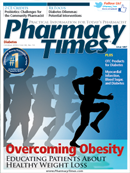Publication
Article
Pharmacy Times
Recurrent Cancer-Associated Thrombosis
The management of anticoagulation in patients with cancer has proved to be challenging. Cancer patients are at an especially high risk for venous thromboembolism (VTE). Furthermore, the anticoagulation therapy itself can be complicated to manage due to the administration of various chemotherapy regimens, hormonal therapy, and antiangiogenic agents; surgery and other invasive procedures; and the long-term presence venous catheters.
Despite adequate anticoagulation, many cancer patients experience recurrent cancer-associated thrombosis (CAT). Studies have shown that the biggest predictors of recurrent VTE despite anticoagulation in cancer patients are the presence of metastasis; tumor type and tumor-node-metastasis staging; gender; younger age; a short interval between VTE and cancer diagnosis (<3 months); and a history of VTE.1,2 For patients treated with a vitamin K antagonist (VKA; ie, warfarin), recurrent VTE is reported in 10% to 17% of cancer patients. For those treated with a low-molecular-weight heparin (LMWH), 6% to 9% of patients experience recurrent VTE.3
VKA therapy fails for many reasons in this population. Even when cancer patients maintain a therapeutic international normalized ratio (INR), they can still develop a recurrent VTE. Management of anticoagulation in this circumstance is challenging. It is not recommended to target a higher INR range because of the increased risk for bleeding without a benefit in reducing recurrent VTE. However, it is recommended that for the treatment of CAT, LMWHs be used for at least the first 3 months, as they have been shown to be more effective than VKAs.4 To date, a couple of observational studies have suggested that switching cancer patients with recurrent VTE from VKAs to therapeutic doses of LMWHs is safe and effective.5,6
In one retrospective cohort study of patients with CAT, dose escalation of LMWH by ~25% was used to help prevent recurrent VTE. The study included 55 patients treated with therapeutic-dose LMWH. In 15 patients, the therapeutic dose of LMWH was escalated to 120% of the original dose. Six patients had a second recurrent VTE during the 3-month follow-up period (95% CI: 4.0%-17.5%): 3 patients who were receiving therapeutic doses, and 3 patients receiving 120% of a therapeutic dose of LMWH. During follow-up, only 3 patients had bleeding complications after their index recurrent VTE event.2
To aid in managing recurrent CAT despite adequate anticoagulation, a practical approach has been developed. For patients who previously failed warfarin, it is appropriate to switch to therapeutic-dose LMWH. For those previously treated with LMWH, a dose escalation of 20% to 25% is suggested. It is recommended that patient followup occur at 5 to 7 days to ensure symptomatic improvement and safety. If symptomatic improvement is not evaluated, another dose escalation should be considered using the anti-FXa level for estimation. Oncedaily regimens should aim for a peak anti-FXa level of 1.6 to 2.0 U/mL, and twice-daily regimens should aim for 0.8 to 1.0 U/mL, although these levels have not been assessed in clinical trials and studies have not been done to show whether divided daily doses are more effective.2
Other methods for managing recurrent CAT, such as switching to a different anticoagulant (ie, fondaparinux or VKA) or the insertion of an inferior vena cava filter, are not recommended because there are no published data on their efficacy. It is also important to note that the use of targetspecific oral anticoagulants is not recommended at this time.
Dr. Resseguie is an advanced-practice anticoagulation pharmacist for the Brigham & Women’s Hospital Anticoagulation Management Service in Boston, Massachusetts. Lucy West is a PharmD candidate at Northeastern University and interns at Brigham & Women’s Hospital Anticoagulation Management Service in Boston, Massachusetts.
References
1. Louzada ML, Carrier M, Lazo-Langer A, et al. Development of a clinical prediction rule for risk stratification of recurrent venous thromboembolism in patients with cancer-associated venous thromboembolism. Circulation. 2012;126:448-454.
2. Lee AY. Thrombosis in cancer: an update on prevention, treatment, and survival benefits of anticoagulants. Hematology Am Soc Hematol Educ Program. 2010;2010:144-149.
3. Carrier M, Khorana AA, Zwicker JI, Noble S, Lee AYY. Management of challenging cases of patients with cancer-associated thrombosis including recurrent thrombosis and bleeding: guidance from the SSC of the ISTH. J Thromb Haemost. 2013;11:1760-1765.
4. Farge D, Debourdeau P, Beckers M, et al. International clinical practice guidelines for the treatment and prophylaxis of venous thromboembolism in patients with cancer. J Thromb Haemost. 2013;11:56-70.
5. Carrier M, Le Gal G, Cho R, Tierney S, Rodger M, Lee AY. Dose escalation of low molecular weight heparin to manage recurrent venous thromboembolic events despite systemic anticoagulation in cancer patients. J Thromb Haemost. 2009;7:760-765.
6. Luk C, Wells PS, Anderson D, Kovacs MJ. Extended outpatient therapy with low molecular weight heparin for the treatment of recurrent venous thromboembolism despite warfarin therapy. Am J Med. 2001;111:270-273.







